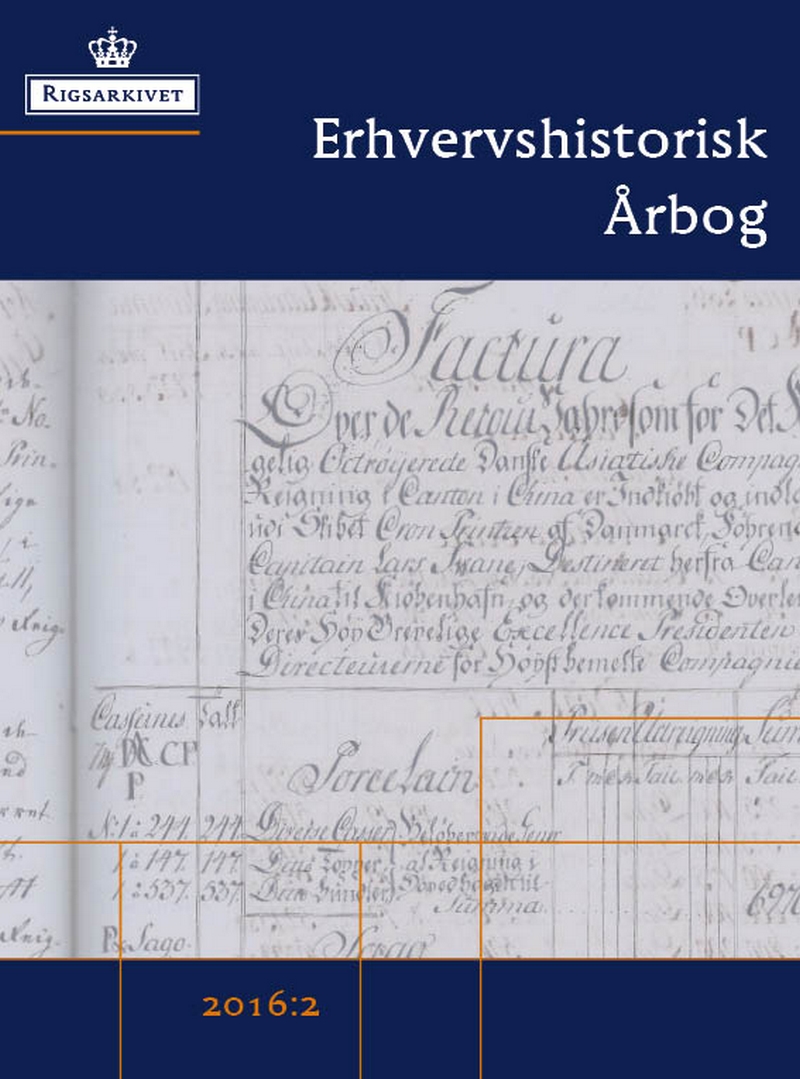Fra hestetræk til GPS-styring. Hovedstadsmetropolens hyrevognstrafik, 1869-2015
Resumé
I denne artikel belyses hovedstadsområdets hyrevognstrafik i de mere end 150 år fra midten af det 19. århundrede til begyndelsen af det 21. århundrede. Resultatet sammenfattes under artikeloverskriften: ”Fra hestetræk til GPS-styring ”, men titlen kunne lige så godt have været: ”Fra planløshed til regulering”. Hermed menes, at denne vigtige del af områdets kollektive bytrafik blev styret af markedet og den teknologiske udvikling, men også af de krav til hyrevognstrafikken, der fulgte med fremvæksten af en stadig mere regulerende velfærdsstat, og regionalt af en stadig voksende og mere kompleks hovedstadsmetropol. Statslige og kommunale myndigheder anså tidligt det koncessionerede og regulerede droskevæsen som en del af metropolens kollektive trafiksystem, og det blev et interessefællesskab mellem myndigheder og hyrevognsbranchens arbejdsgiver- og lønmodtagerorganisationer, der, trods perioder med liberaliseringsinitiativer, banede vejen for en stadig en stadig større regulering af erhvervet. Det kulminerede i starten af 1970’erne med en hyrevognslov og ét samlet hyrevognsområde med samme rettigheder og pligter for hyrevogne i den del af den daværende hovedstadsmetropol, der omfattede hovedstaden, København-Frederiksberg, og forstæderne i Københavns Amtskommune.
---
In recent years, the Danish metropolis has been characterised by steadily aggravating tensions between Uber and the taxicab profession. Uber represents an internet-based transportation network providing car services that comprise the ordering and payment of private transportation between destinations specified by the customers. The taxicab profession in Denmark, subject to strict statutory regulation, considers Uber’s transportation solution to be illegal pirate taxi driving.
Currently, the taxicab profession form a united front against the threat posed by Uber. And tremendous political-ideological battle lines have been drawn. In September 2015, Rasmus Prehn, the Social Democratic Party’s spokesman on traffic issues strongly emphasized in the Danish tabloid, BT, that there would be ”no liberalisation of the Danish taxicab legislation to give the seal of approval to the American car-service company Uber’s operation in Denmark”. ”This is a company based on a tax haven-construction undermining the standards of Danish working conditions and wages”, Rasmus Prehn continued, concluding that ”we need taxicabs that we can entrust with the transport of our children. This, for instance, presupposes a set of safety standards and, hence, we need regulation within the area”. Opposing this point of view in the business section of the Danish daily – Berlingske, in September 2015, Liberal Alliance party member, Joachim B. Olsen, made the following statement: ”Political interference in the competition within the taxicab profession is a preposterous idea”, elaborating: ”The regulation of the taxicab profession certainly does not benefit consumers. In Denmark, it’s expensive to take a cab. Whichever cab company you choose, there’s practically no difference. They provide the same service. Therefore, competition is a good thing”.
However, the conflict between licensed cab drivers and unregulated commercial passenger transport is no new phenomenon. Ever since independent taxicabs began to emerge, after the end of World War I, and throughout the 20th century, cab-driving constituted a pronounced area of conflict, attracting considerable media attention and forming the basis of ideological-political points of view. With this point of departure, this article sheds light on cab-driving in the metropolis over the span of more than 150 years from the mid-19th century to the beginning of the 21st century. The result can be condensed to the article heading: ”From horsepower to GPS navigation”, though the title might as well have been: ”From absence of method to regulation”.
This suggests that this important part of the area’s public transport was driven by the market and technological developments as well as by such requirements to cab-driving as followed in the wake of the growth of a steadily regulating welfare state and – regionally – by the constantly growing and increasingly complex metropolis. Quite early, both government and municipal authorities began to consider the licenced and regulated cab-driving traffic services to be a part of the public transport system of the metropolis. And thus, a community of interests arose between authorities and the cab-driver profession’s employer and employee organisations which, despite periods of liberalisation initiatives, paved the way for a steadily increasing regulation of the profession. This reached a climax in the early 1970s with a taxicab law and one collective taxicab area with identical rights and obligations for cabs in the part of the then metropolis area that comprised the capital – Copenhagen, Frederiksberg and the suburbs of the county council district of Copenhagen – Københavns Amtskommune. An area that, in 1970, comprised more than 1.3 million inhabitants.
Downloads
Publiceret
Citation/Eksport
Nummer
Sektion
Licens
Ophavsret til artikler publiceret i Erhvervshistorisk Årbog er fastlagt i henhold til den modelaftale, License to publish, som UBVA har offentliggjort under rubrikken Ophavsret og forskningspublicering. Indsendelse af en artikel til Erhvervshistorisk Årbog indebærer en accept af dette. Modelaftalen kan findes ved hjælp af dette link: http://www.ubva.dk/Forside





